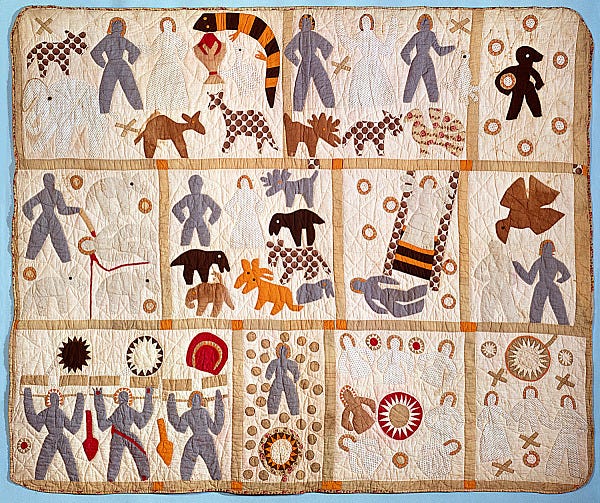Who is finding it hard to be creative amidst such struggle, upheaval, and chaos? I bet you nodded, and maybe even raised a hand.
This is the time we need to be turning to art, even when it’s hard to understand why our own art matters (psst…your art always matters). If you can’t make art, it’s always nice to be able to find artists who can fill our cups. Living in a small community, I don’t always have access to art openings and a plethora of galleries, but thanks to the science box in my hand and on my desk, I can dip my toe (or whole leg) into the creative world at the tap of a finger.
Once a month, Artsy Fartsy will be more visual, more focused on celebrating the work of others, rather than just me reflecting and rambling. That will come your way in a couple weeks. :)
This month I wanted to share with you a bit about the history of a quilter named Harriet Power, along with some great words from Marina Abramović, the music of Ukrainian group DakhaBrakha, and finally the work of Ellen Lesperance.
In coming months I hope to share the art that is inspiring you, if you have anything you’d like to share, email me at cole.megan1@gmail.com
One bit of art I found interesting recently was this Bible Quilt by Harriet Powers. Harriet is known as a quilter and folk artist who was born into slavery in Georgia. Following the American Civil War, Harriet and her husband were emancipated. They fell on hard times, and the Harriet’s husband left her. It’s believed that because she never remarried, she likely supported her family as a seamstress.
Her first quilt was displayed at the Athens Cotton Fair. An artist and art teacher, who was at the fair, fell in love with the quilt and wanted to buy it, but Harriet refused. When Harriet and her husband fell on hard times, he encouraged her to sell the quilt for 10 dollars, but Jennie Smith, the woman who first fell in love with the quilt, talked Harriet down to 5 dollars.
Art historians have noted that Harriet’s style which combines applique, and hand and machine sewing, has similarities to West African wall hangings.
For more about Harriet Powers and the importance of her work watch this great video.
I’m going to leave you with an artist who I just learned about yesterday while watching a workshop on visible mending. Ellen Lesperance is a Portland, Oregon artist who’s work combines paint and knitting centred on attire worn by female demonstrators, cultural figures, and warriors, sourced from photographs and historical archives,




